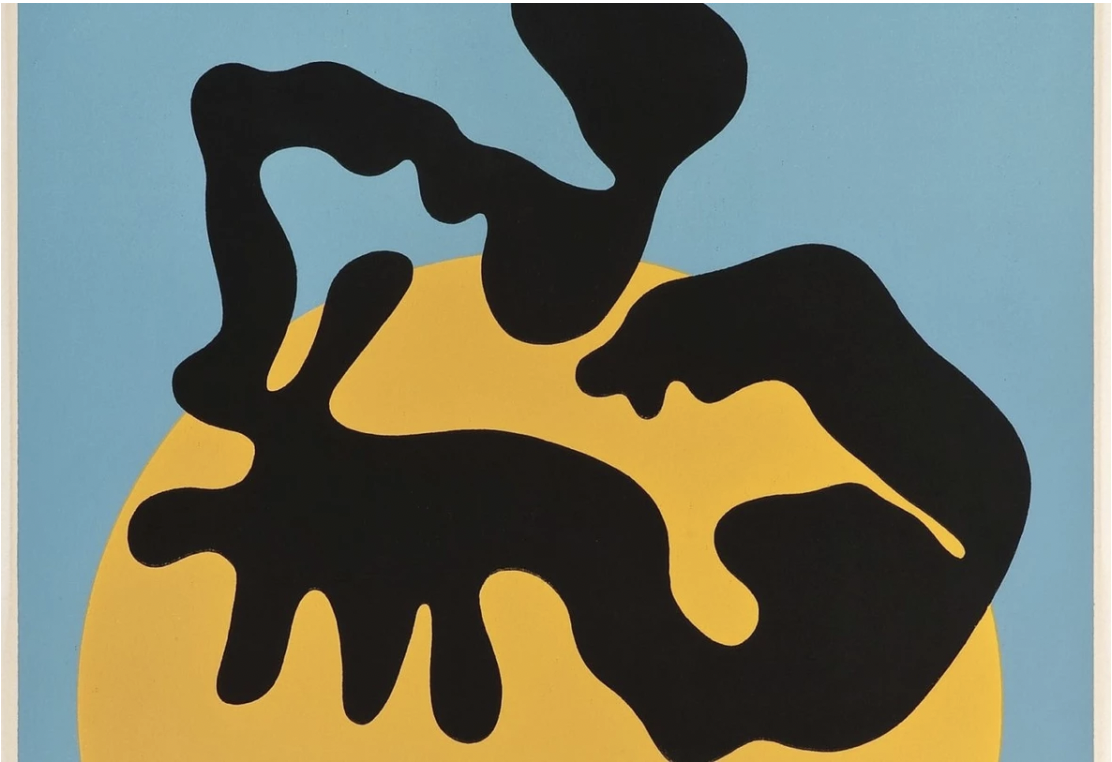When You Hear CRISPR, Do You Think DADA? Part 2
Here's a link to the first post in this series.
QUICK RECAP. In 1916, the Dadaists launched their movement from the Cabaret Voltaire in Zurich. Several manifestos explaining DADA were written and shared. A master strategist (Tristan Tzara) elected himself.
A painting by Hans Arp
The artists at the Cabaret Voltaire supported and encouraged each other. Dada spread around the world and its influence is still felt today.
The Dadaists worked in visual, literary and sound media. They painted, wrote, photographed, performed. They also made chance encounters (meetings, conversations, collaborations) a part of their creativity.
My initial idea for this series stemmed from the Dadaists work in collage, sound poetry, and cut-up writing.
There’s a straight line from the Dadaísts to the Beat Generation poets of the 1950s-1960s and the cut-up technique of William "Naked Lunch" Burroughs which in turn spawned sampling and mash-up culture.[1]
La Joie De Vivre, Max Ernst
This cutting up and sharing of information is what nature does, naturally.
Nature shares information constantly. Useful information is incorporated, useless, dangerous information is destroyed.
Reread that.
If nature shares information as a matter of course, why aren’t you?
What lessons can we take from the Dadaists?
1. Use the media that you have at your disposal.
As I mentioned above, the Dadaists worked in every media.
Today, you’ve got more choices to deliver your message than ever. You have more opportunities to build an audience. And you have more opportunities to get your message in the hands of your audience.
It’s a matter of knowing how to find them and connecting.
In my opinion, this starts in the real world. At school. In meetings and conferences. At events.
2. Start writing, recording or filming [2].
3. Then SHARE. Whether you do that by taking baby steps on Twitter, sharing longer pieces on Medium or posting on YouTube, the sharing is as important as the creating.
Hell, you might even choose to share your ideas in an MMO.
You can’t change the world in a void.
Rodrigo Martinez of Veritas has said HOW you tell your life science story is as important as the idea or technology you’re working on.
His message echoes Marshall McCluhan’s “the medium is the message.”
So, what are you doing to tell that story? What medium are you going to use?
[1] While I was writing this piece, I was invited by my friends at Geltor to sit in on a cultural briefing at the consulting firm Sparks & Honey. The consulting firm mentioned mash-up culture as a supertrend. I don't know if that means it's like a superfood.
[2] Even I have now created video. And the truth is, I was embarrassed to do it. I felt the same way when I first walked onstage to speak, or when I first appeared on podcasts. But I want to help life science entrepreneurs tell their story and help change the world for the better. The video, BTW, was shared by SynBioBeta on Twitter and got a few views, but that’s not why I did it. I did it to prove I can. And if I can you can too.
If you enjoyed this post, here are some others you may enjoy.






